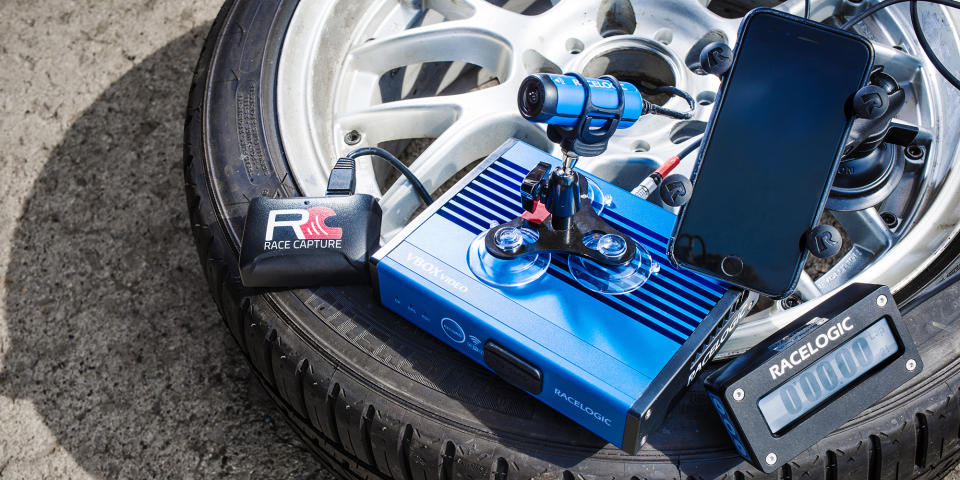How to Get the Most of Lap Timer and Data Loggers

Few things frustrate like struggling to shave tenths from a lap time. The good news: Technology can help. Data-loggers, lap timers, apps, and video systems can become shortcuts to quicker laps. But they can also be intimidating to learn.
“The single biggest problem I see is drivers buying a system and not having a process or the time to be able to really analyze the system,” says Ross Bentley, author of Speed Secrets, a series of performance-driving manuals. Bentley was among the first pro drivers to use data recorders and has applied intensive data analysis in his driving instruction for decades.
There are many data recorders on the market, and they vary greatly in cost and features. The capability of one over another is ultimately less important than learning to use that system well. Bentley recommends carving out a few minutes between driving sessions to analyze data and compare information from previous stints. Better yet, have a quicker driver set lap times in your car as a baseline for comparison with your own runs.
Most systems produce the same metrics - velocity, g-forces, time deltas, and lap times. Focus on just one or two as you learn your system. The most important, Bentley says, is a speed trace. This seismograph-looking plot shows velocity over the course of a lap. Peaks occur on straights, valleys at corner turn-in. Pay attention to speeds at corner entry, apex, and exit. Learn the shape of the speed trace from a good session, then experiment. For example, try more trail braking and review the shape of the graph, comparing old speeds with new.
Another parameter, time delta - or delta t - can simplify this process by directly comparing two laps. With your fast lap as a baseline, delta t reveals where you lost time. Use speed traces and video to figure out why.
This will lay the groundwork to dissect peak g-forces. “If you reach a peak in one corner that’s relatively at, ask yourself, Why can’t I hit that peak in another corner?” says Bentley. Using g-force data, you can derive more complex information, like brake and steering pressure, to deduce how smoothly you transition into a corner.
But remember, patience and consistency are key. “It’s important to write down what you believe will make the difference, and pick one or two things - don’t try to go and x everything all at once,” Bentley says. “Data is great at giving you tons of information, and it’s great at telling you, ‘Go do this and this and this,’ and then your brain just explodes. Pick one or two things and go work on those.”
You Might Also Like

 Yahoo Autos
Yahoo Autos 